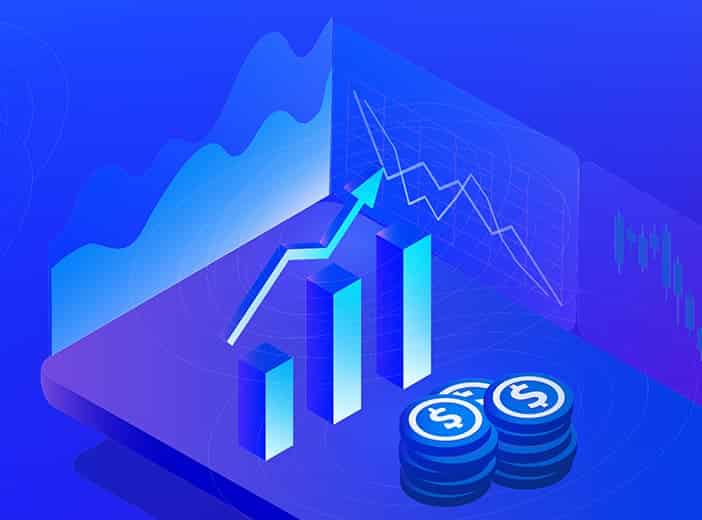The benefits of buying, not building, your data marketplace solution
Deploying a central data marketplace may seem to be a project your IT team can handle. However, this risks creating a suboptimal solution that doesn’t meet corporate or user needs. We explain why partnering with an external SaaS vendor is the best option - and what to look for in your partner.

Organizations face a pressing need to harness their growing volumes of data and effectively share it internally and externally. That’s why they are increasingly adopting centralized data marketplace solutions that unify their data assets and provide secure access for employees and stakeholders, advancing data democratization and turning data into business value.
Creating these central data portals/data marketplaces for data sharing requires powerful functionality, an intuitive interface and a self-service solution that is easy to maintain, manage, and extend. That’s why, while it may seem straightforward for IT teams to build their own solution, partnering with a specialist Software-as-a-Service (SaaS) data marketplace provider is the better option in terms of performance, cost-effectiveness, usability and scalability.
Choosing in-house data marketplace development
The benefits
At a high level, developing your own data marketplace solution in-house does seem to deliver some benefits. It means that the marketplace will be a close fit for your specific needs, as it is developed solely for your own use and is based on your business requirements. At a technical level, your data and IT teams can work closely together to optimize the solution for users and ensure that it integrates closely with your data stack.
The challenges
However, the challenges of developing in-house outweigh the benefits listed above. Building your own solution from scratch requires a lot of resources – and there is the risk that development will be pushed back if IT staff are diverted to other projects. Equally, while your IT team may contain skilled programmers they are unlikely to have created a data marketplace solution in the past. This leads to a steep learning curve, which can cause project delays or mean they deliver a suboptimal solution that fails to meet your needs. Additionally, there is the possibility of internal politics between IT and data teams causing confusion and lengthening development cycles. Finally, the new solution will have to be maintained and extended, adding to costs and pressures on your IT team.
The benefits of working with a specialist SaaS data marketplace provider
Given the disadvantages of building your own data marketplace, most orga
nizations will choose to work with an external SaaS provider to underpin their solution. While there are options to deploy a data marketplace built on open source software, this can lead to other challenges around implementation, support and scalability, as we explain in our blog The hidden costs of open source data projects.
Partnering with a commercial SaaS provider delivers benefits for all parts of the business:
Benefits for IT
By adopting an already mature data marketplace solution, IT teams avoid the need to develop their own solution. This dramatically improves deployment times and cuts down on maintenance while allowing IT staff to focus on other projects. Equally, choosing a data marketplace solution that integrates with the wider tech stack helps maximize value from overall technology investments by providing a single point of access to data for the business. As the SaaS provider handles key areas such as hosting and security this further reduces the overall load on the IT team and ensures solutions seamlessly scale to meet changing needs. IT also benefits from the ongoing investment that marketplace providers are making in their products, constantly improving them through innovation – something that would be impossible to replicate with an in-house solution.
Benefits for data teams and administrators
Data leaders are under pressure to maximize value from their organization’s data by securely sharing it widely across the organization and external ecosystem. A commercial SaaS solution can be deployed rapidly, enabling them to deliver data to all much faster than if they built their own solution. And, as the solution is self-service, users are able to access data themselves, reducing the number of inbound requests for specific data assets from the business. Solutions can be tailored to company needs, including applying corporate design guidelines to ensure consistency and drive user uptake.
Managing and running an external solution will also be easier for data administrators. They will have access to a proven, well-designed management backoffice, rather than having to work with technical interfaces created by the IT team.
Benefits for users
As with any new software solution, users need to be encouraged to adopt your data marketplace. That means your solution has to go beyond technical functionality to provide an intuitive, understandable, self-service interface that anyone can use confidently. Commercial SaaS solutions have the benefit of being deployed in hundreds of organizations, and are proven to meet the needs of millions of users, of all different types. This will accelerate adoption and usage, helping build a data-centric culture across the business.
Benefits for budgets
Choosing a SaaS solution also delivers financial benefits to the organization’s bottom line. Companies avoid the costs involved in building a marketplace in-house, removing the need for expensive developer time as well as the ongoing resources required to manage and administer the marketplace. Marketplace providers should also be able to share best practice advice, upskilling your team and avoiding the need to employ additional consultants to provide strategic advice on best practices, such as around data governance.
What to look for in a SaaS data marketplace provider
Clearly, not every SaaS data marketplace provider offers the same breadth of features, experience and capability. Whatever your specific needs, look for these five strengths when shortlisting and choosing a partner:
Powerful, flexible technology
At its heart, the data marketplace solution has to be robust, scalable and secure. It has to be able to connect and integrate easily to the rest of your technology stack and business systems in order to automate data flows, and be scalable to meet your needs as they grow. The solution should be flexible so that you can tailor it to your specific needs, from overall design to connections to the specific systems and data sources in your business. Your provider should meet the highest levels of security, and be able to offer flexible hosting options, such as around sovereign cloud deployments. Often, data sharing requirements evolve over time, with many organizations extending their marketplaces to different audiences. Look for a technology solution that can deliver multiple marketplaces or spaces from the same solution to minimize administration and management time, and maximize flexibility.
Technology doesn’t stand still, so work with a company that has a clear development roadmap for the future and is committed and experienced in harnessing new technology, such as AI, to improve its solution.
Intuitive interface
Your data marketplace solution needs to be user-friendly as well as powerful. That means it has to be easy to use by all of your audiences. For non-technical users, such as employees, it should provide an intuitive, self-service interface, similar to an ecommerce marketplace, with in-built search and discovery tools that quickly connect users with relevant data assets. This interactive experience will encourage usage and help build a data culture within the organization. Data assets should be available in a variety of formats to meet the needs of different users – for example, through visualizations such as dashboards and maps, via APIs to automate downloads and integration for more technical audiences and in common file formats to aid re-use. Granular access rights, linked to corporate policies and directories, should be in place to ensure security and to preserve data confidentiality and compliance, while providing users with the opportunities to request access to data assets if required.
Easy administration
Once your marketplace has been created, you want to have control to ensure you can manage and extend it on an ongoing basis. You don’t want to have to rely on your technology provider to make changes for you or to have to spend hours administering your solution. Therefore ensure the solution you pick has an easy-to-use back office interface that makes management intuitive, and requires minimal training. Also, check that it includes tools to help you continually improve your marketplace, such as no-code capabilities that let you design and build visualizations and pages quickly, without needing to know HTML.
All of this should be backed by comprehensive, easily accessible documentation and self-service knowledge that helps you fine tune the solution or add new features yourself in order to maximize your investment. And, of course, you should be able to easily escalate any queries to an experienced support team that provides fast answers within clear timelines.
Experience and specialist knowledge
Ensure that your provider has in-depth experience of the data marketplace market, and a track record of delivering multiple projects to a range of clients across different sectors. This means that their technology and approach are both tried and tested, accelerating your project and the benefits you receive by applying best practice principles. As well as experience, look for a provider with specialist understanding of the market, including expertise at handling industry standards around data, and knowledge of relevant regulations around data compliance and sharing. This will help with knowledge transfer to your team and shorten any learning curve.
Community focus and approach
Data sharing at scale is a relatively new concept in many sectors, making it important to learn both from your data marketplace vendor and other users of their solution. Therefore as well as a large, engaged client base that you can talk to, make sure your vendor has a strong team of Customer Success Managers that can advise you on best practice ways to improve and grow your marketplace. Look at the other resources your vendor and its community can provide. For example, Opendatasoft’s Data hub brings together over 30,000 datasets that are freely available to share and combine with your own, enriching your data to make it even more valuable, while its Community space provides self-service support and advice from fellow data leaders from the company’s portfolio of over 350 customers in 25 countries across multiple industries.
Choosing the right data marketplace solution is central to a successful data sharing program, which is why organizations should buy rather than build. Working with a specialist, knowledgeable SaaS provider who combines technology excellence with extensive experience helps create a complete solution for successful data sharing, delivers a cost-effective deployment, and builds a platform for future success.
Want to learn more about Opendatasoft’s data marketplace technology and approach? Book a personalized demo with our team now.




